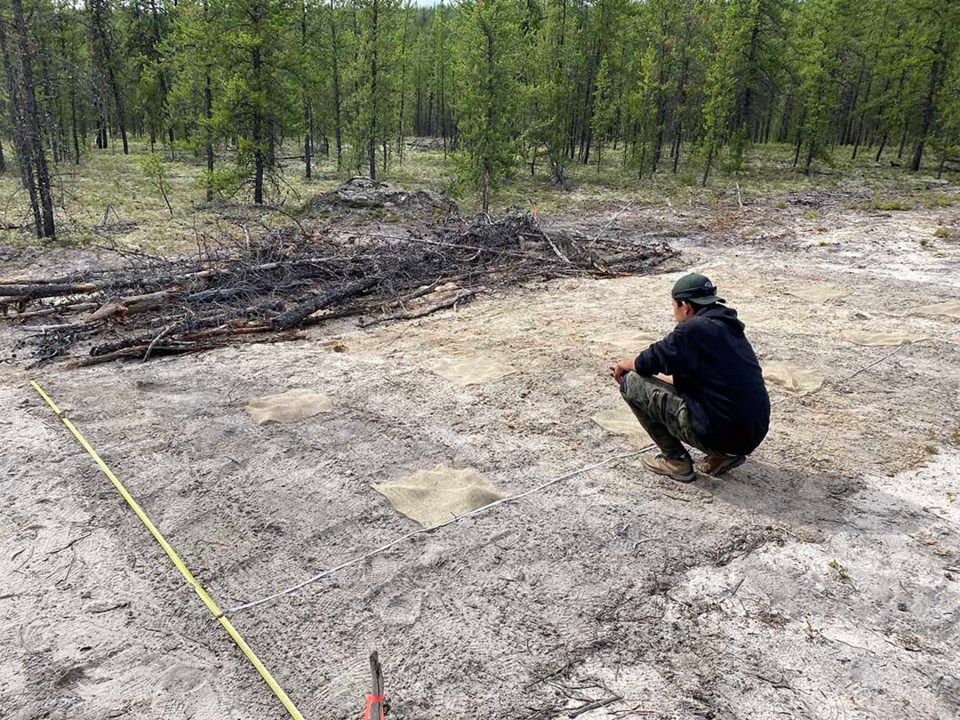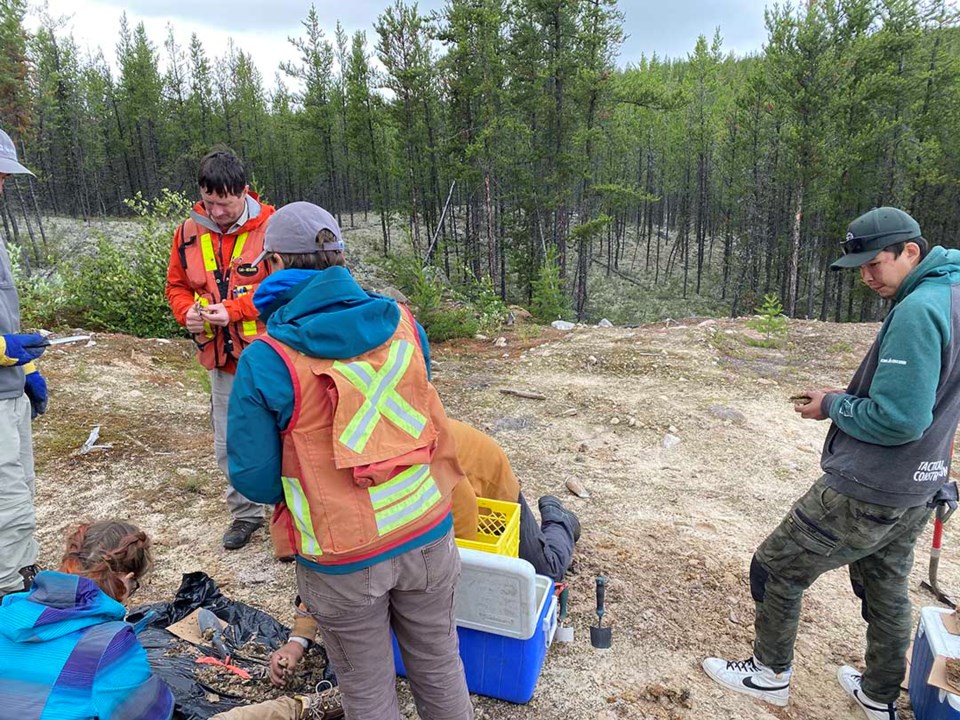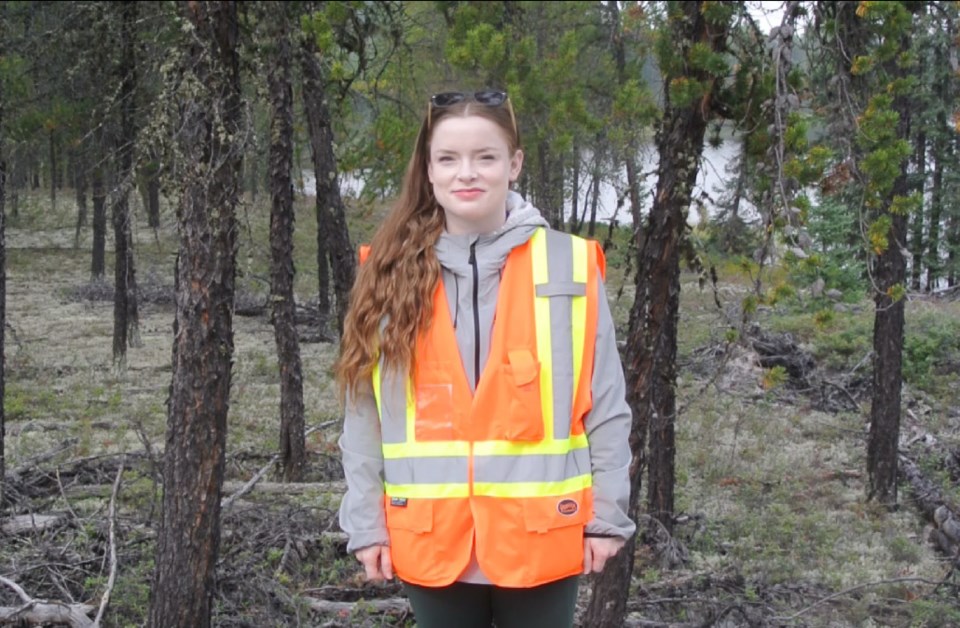SASKATOON — In the northwest corner of Saskatchewan, where the boreal forest stretches endlessly and tradition runs deep, an innovative approach to restoration is taking shape.
At the heart of this effort lies a question: what does it truly mean to care for the land? For Mackenzie Burnett, a Master of Environment and Sustainability student with the School of Environment and Sustainability (SENS) at the University of Saskatchewan (USask), the answer begins with listening. Listening to the people who have relied on the land for generations and listening to the land itself.
This question drives her work with the Developing Eco-Restoration Together (DERT) project.
Restoration science traditionally focuses on repairing the intricate relationships between plants, soils, soil microbes, and the environment. These connections are often disrupted by human activity. Understanding how to rebuild them is critical to restoring ecosystems.
Through her work with DERT, Burnett has come to see that restoration is about more than ecological science. It’s also about the human relationship with the land and with the people who rely on it.
DERT was developed in partnership with NWC Environmental Services, Denison Mines, and USask. The project brings together Indigenous knowledge and science to create meaningful and lasting restoration practices that honour the land and include perspectives from neighbouring communities.
When Burnett joined the project, her role was to connect with communities in Pinehouse, Patuanak, Île-à-la-Crosse, and Beauval. She shared details about the initiative and engaged in conversations with community members.
These early discussions led to the formation of an Indigenous Advisory Board. This ensured that community perspectives were part of the project from the start.
The board became central to Burnett’s work.
“I was really intrigued by the idea of collaborative restoration,” she said. “I wanted to understand if it was truly more effective than previous approaches where people often worked in silos.”
Her conversations with community members and industry partners raised deeper questions. How do Indigenous communities and industries define restoration? Are their visions aligned? If not, how can those gaps be bridged?
For Indigenous communities, restoration often extends beyond ecological repair. It includes the ability to meaningfully practice treaty rights, clean the water, bring back the animals, and foster connections between Elders and youth. This holistic vision integrates cultural, social, and ecological renewal, going beyond conventional scientific definitions.

Member of the project team surveying a field trial looking at how wildfire charcoal and moss impacts jack pine and blueberry growth and soil chemistry. | Photo courtesy USask
Another key to DERT’s unique approach is its focus on long-term outcomes. Restoration is not a quick fix; it unfolds over generations. Sustainable recovery depends on partnerships with those who hold lived, intergenerational knowledge of the land. This alignment ensures efforts meet both ecological and community needs.
“What I hope DERT is achieving, what I believe it is achieving, is an evolution in how we view restoration,” said Dr. Katherine Stewart (PhD), Burnett’s co-supervisor in the College of Agriculture and Bioresources. “Our time on the land is brief compared to its long-term recovery. The communities who live here, who understand every tree, root system, and waterbody, are integral to its success.”
Denison Mines, a key DERT collaborator, demonstrates how industry can support reconciliation. Their Wheeler River Project reflects a commitment to working with communities. It goes beyond regulatory requirements to build genuine relationships.
“This partnership isn’t about checking corporate boxes,” said Stewart. “It’s about working with the people who call this land home and finding ways to move forward together. Indigenous voices at the table are essential.”
DERT’s Indigenous Advisory Board ensures that those voices are part of the solution in a long-term sustainable way.
“What I heard during my conversations from many community members is their desire to be part of the restoration process,” said Burnett. “They envision training programs and employment opportunities that allow them to carry out this work in the future.”
“Sustainability often gets framed as the responsibility of governments or non-profits,” said Dr. Maureen Reed (PhD), Burnett’s other co-supervisor from SENS, and UNESCO Co-Chair in Biocultural Diversity, Sustainability, Reconciliation, and Renewal. “But projects like DERT show how powerful collaboration can be when the private sector, academia, and communities come together. Sustainability is practical, essential, and rooted in relationships.”

DERT project members handling samples at site near Wheeler River project site. | Photo courtesy USask
DERT is not just about fixing what’s broken. It is about reimagining how restoration happens. The project brings together community members, industry leaders, and scientists. It aims to create a future where respect for the land and its people guides every decision.
“This project isn’t just about understanding what the land needs to repair itself after an event,” said Burnett. “It’s about working with Indigenous communities to understand their perspectives and bring them into the fold. Many of these communities have been advocating for years about how to restore the land. Now, it feels like we’re finally listening.”
— Submitted by USask Media Relations




